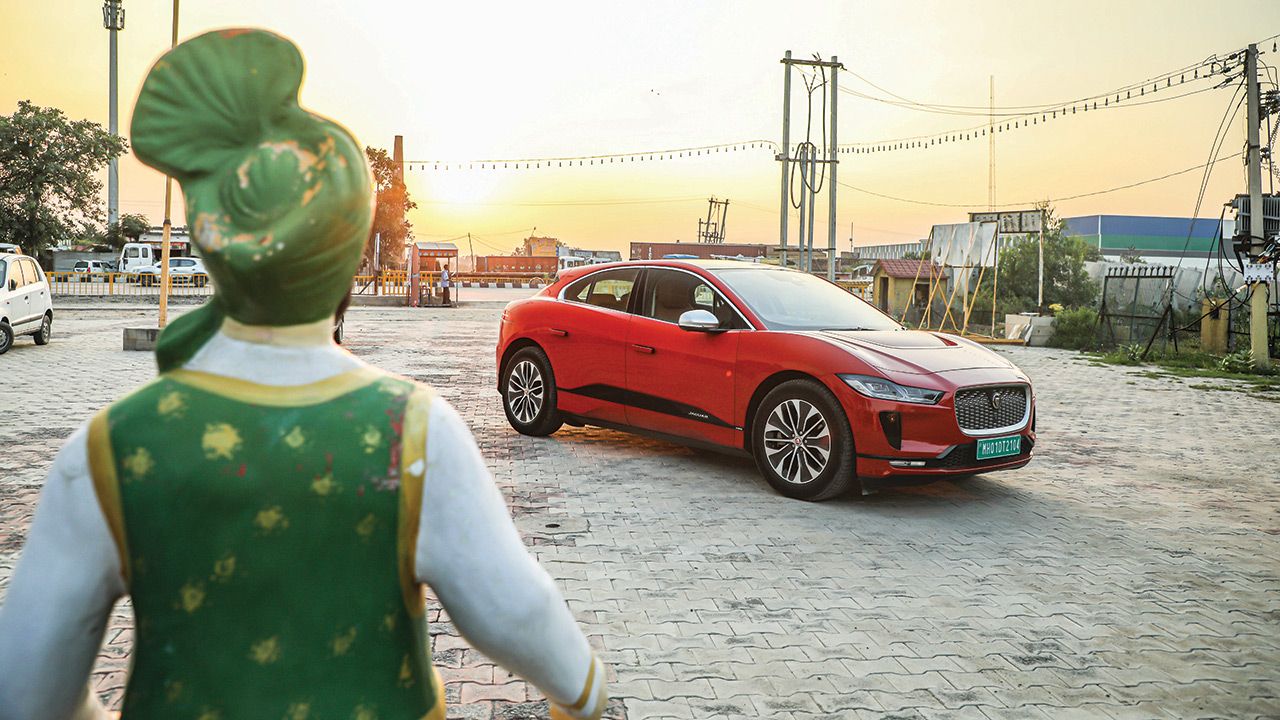
How logical is it to take an EV on a road trip? Not quite! And, here’s why.
It’s easy to see why electric cars are gaining popularity now. Not only do EVs produce zero tailpipe emissions, but they are also more feasible to drive in comparison to traditional cars. I’d go as far as to say that EVs make a lot of sense for someone using a car primarily for intercity commutes and daily driving. Even the humblest of EVs – like the Tata Nexon – can run for 200km on a full charge in the real world, and that’s not bad.
The thing is, cars aren’t meant to be driven within limits. The whole point of buying/owning a car is that it gives you the freedom to travel anytime, anywhere. And while you can take an EV on a long road trip, it’s not going to be as enjoyable or straightforward as driving a petrol or diesel vehicle. Now to find out how challenging is it to take an EV on a road trip, I decided to take the stunning Jaguar I-Pace on a short three-day road trip to Chandigarh from Delhi. Apparently, this stretch between the national capital and the UT is supposedly the country’s first EV-friendly highway, with charging stations at every 35-40km. Sounds too good to be true, doesn’t it? But, unfortunately, it wasn’t the case. Let’s just say that after driving the I-Pace for close to 800kms over three days, all I can say is that driving an EV long distance is not for the faint-hearted.
During the journey, most of the so-called chargers weren’t an easy plug-and-play affair. In fact, almost all of the BHEL-installed chargers on this route didn’t support the CCS Type-2 connector, which is a surprise because most of the EVs sold in India use that. There are Tata Power charging stations at multiple points, and these seem to be the only ones that work. Sure, these are 25kW DC chargers, but it takes quite some time to juice up the battery pack. What baffles me the most is the location of Tata’s charging network? Why are these installed at petrol stations? What’s the point? I mean, why not have these installed at food joints or multiple dhabas that this particular stretch is famous for? Won’t that make more sense for an EV customer? In fact, it also makes a good business case, if you know what I mean.
All told, unless and until you’ve figured everything well in advance, it’s still a bit difficult to take an EV on a road trip. Make no mistake, the cars are ready, but there’s no EV infrastructure to support them, especially over long distances.
- WHAT ABOUT THE I-PACE?
When I started, I had my doubts about the I-Pace. But, frankly, after spending three days with it, I was speechless! The way it picks up ‘pace’ is simply mindblowing – there’s absolutely no delay and you get away from idiots in no time. Also, has no one told Jaguar that electric cars aren’t supposed to handle this well? Honestly, the I-Pace is every bit as good as traditional Jaguars, and the way it handles, it beggars belief! Despite weighing well over two tonnes, it masks its weight so well. Even the ride quality is stellar. Not to mention, it’s supremely refined, practical, spacious, and, of course, luxurious. What’s not good? I felt the glass roof makes the cabin ‘toasty’ on a hot day, and the infotainment system has some lag. But, overall, the I-Pace felt perfect.
Read more:
Honda Sunchasers 2021: Exploring Arunachal Pradesh on a H'ness CB350


























Write your Comment